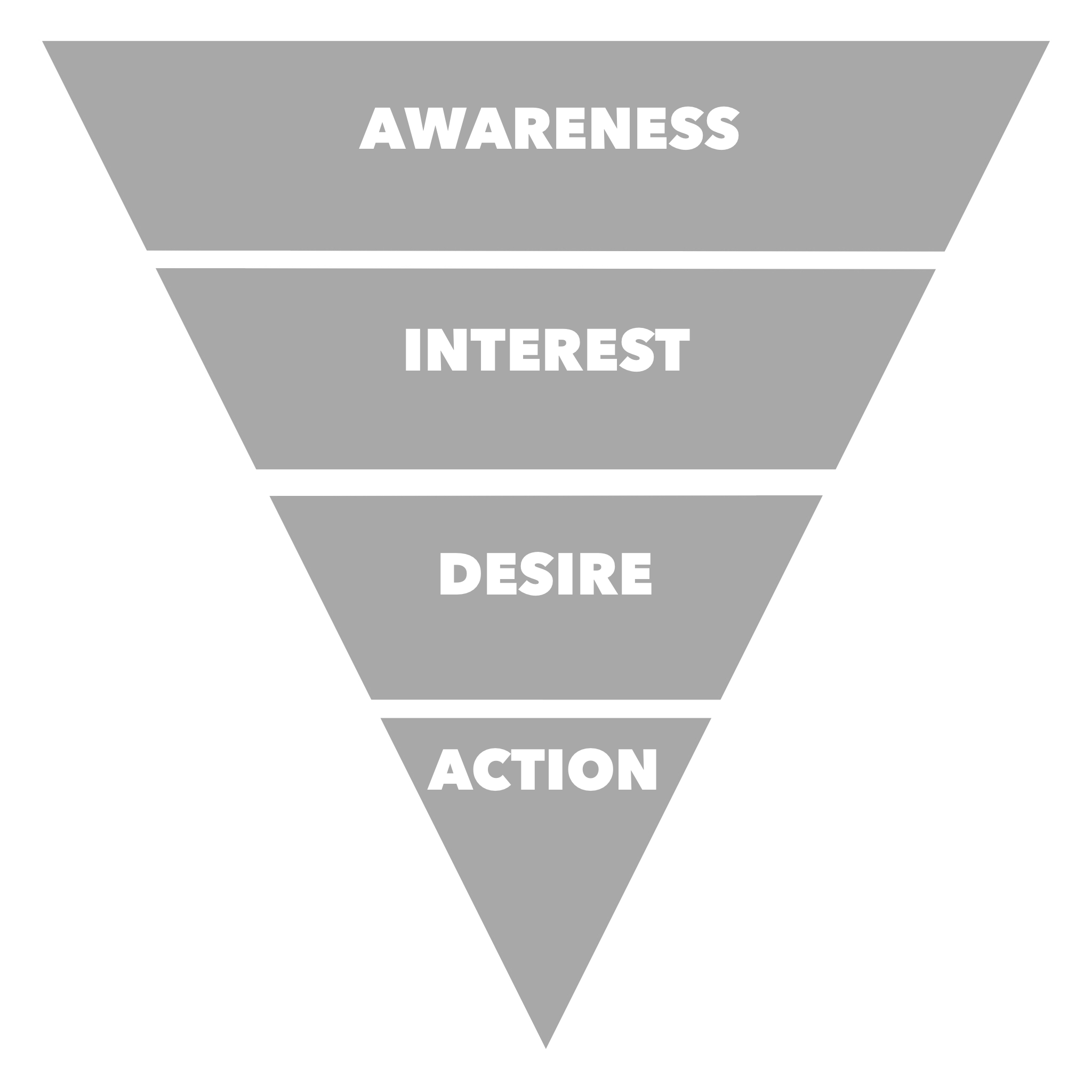Apr. 16, 2018

AIDA And How It Applies to Your Paid Advertising Campaigns
AIDA, what is it and what does it have to do with my paid ad campaigns? Do you hear a lot of jargon from your internal marketing department or the agency you are partnering with? I’m sure the only acronym you want to hear is ROI. You’ve made a clear investment through your ad spend and now you want to see that return. Defining that return and more specifically what it should be, is what I plan to do.
What is AIDA?

First, AIDA – action, interest, desire and action is a marketing model used to describe what is required for a consumer to learn about your product or service and to eventually convert. Our goal as digital marketers is to get potential customers to move to the action level. With this model in mind let’s explore how this shapes our digital advertising plans.
What’s your definition of a “conversion”?
Return = bottom line sales dollars right? Not exactly. To understand what it is you have to identify what the goal of that specific campaign is while you are formulating your game plan. Are you at the awareness stage? If so, your targeting method will be different compared to tackling desire or action.
What’s your Omni-Channel experience?
This marketing model is very useful when setting up your campaign’s target audience. Keep in mind, paid ads are likely not the only marketing tactic you are employing. In fact, your overall strategy comprises many initiatives. Ranging from on page organic search optimization or even offline campaigns such as radio and print ads. How they all work together is your omni-channel marketing approach. When are you reaching your users and with what message? Radio and print traditionally serve as brand awareness so that the familiarity can create a sense of trust and credibility once potential customers move down the funnel and find your site based on a specific search and your organic optimization efforts.
As part of your strategy and goals you may have multiple ad campaigns on multiple ad platforms. I often run pay-per-click ads through Google AdWords and paid social ads through Facebook Ads Manager in tandem with one another. There may be tons of opportunity on both platforms or I may be talking to consumers at different stages of AIDA. One platform deals with keywords the other is interest and audience based. You will likely see that return through both campaigns but it’s important to identify what a return may be in both instances. Set those expectations early.
PPC v. Paid Social Ads
Paid Social Ads for Awareness
Perhaps you have a new site with very light traffic and you simply want to get people there. Display campaigns that target based on interest, geo location or demographics can help you achieve the volume of traffic you need for people to become aware of your brand and what you are providing. This method of building an audience is broad in nature so conversions whether it’s sales or leads likely won’t be high. But remember, that’s not your focus. You want to look at volume of traffic, time spent on your site, the number of pages viewed and what secondary actions they took. The hard part is accepting the media spend and not seeing the sales.
But AIDA is truly a simplified model of consumer buying cycles. Depending on your product or service we as consumer may have several steps in our consideration process. The key to all your marketing efforts is to be where your customers are. Avoid short sighted decisions based solely on sales.
Pay-Per-click Ads for Action
On the flip side to that you have pay-per-click ads that use keyword targeting. The search intent is much more clear and potential customers are finding you based on a very specific search query. You are most likely attracting users in the decision and ready to take action stage. It’s also beneficial depending on your industry and the nature of your business to have both campaigns running simultaneously. Your social advertising will create awareness but you don’t know if your prospect is in the mindset to engage just yet. With keyword targeting they are telling you they are ready. Having seen the display ads previously could be the push they need to click through. Remember always be where your customers are and more often than not they are in more than one place.
So What Is My Return on Ad Spend?
Be sure to define this with all stakeholders before you launch any campaign. Setting the right expectations can avoid shutting down a very beneficial campaign. If you are seeking awareness, the focus should be on how many people saw your ad and engaged with the landing page. Then sales and leads are a secondary goal you are tracking. Ask yourself this one question before you start: what am I trying to achieve? And make sure all stakeholders are invested in this goal you’ve identified.
I could go on and on but I’ll stop there. If you want to continue this conversation with me simply reach out and set up a time to review your digital marketing goals.
Read More
Read More About
Book with us
Let’s accomplish what you are looking for, our team of experts are here for you.
Let's work togetherWarning: Working with our team may result in excessive creativity, uncontrollable 'aha' moments, and an addiction to perfect pixels. Please proceed with caution.



